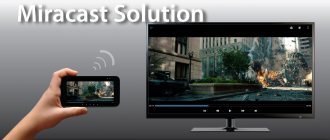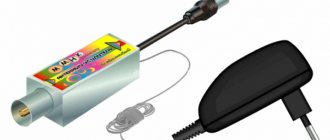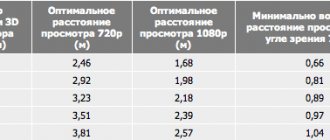Today televisions have become an integral part of every family. Coming home after work, everyone wants to clean themselves up, be sated and disconnect from reality for a while with the help of a spectacular performance. For decades, television has been successfully coping with this human need, presenting households with various entertainment programs and watching their favorite films. Television has become an everyday object for all people without exception.
In addition, this technique serves as the main mass media, allowing vacationers to find out news about events occurring within the state and beyond. Plus, TV viewers are offered a lot of useful sections that allow them to obtain educational information about various ways to spend their holidays and receive useful tips about the home and garden. Television attracts millions of people to its screen every day. And if we add here a club of interests that attracts fans of sports competitions and all kinds of championships in other areas of entertainment, then it becomes clear that television is ready to fill all the free time of any person. The structure of the TV, its history, operating principle are further in the article.
Revolutionary discovery
The first discovery was made back in 1843 by naturalist A. Behn, who built a device using wax-metal plates. His invention was capable of transmitting images over a distance. However, the main discovery belongs to W. Smith, who in the second half of 1873 established that semiconductor elements have the ability to change resistance when the brightness of lighting changes.
Screen coating
Which screen coating should you choose – matte or glossy? The second option is characterized by a contrasting and bright image. Among the disadvantages are the glare that appears from the sun's rays. This is explained by the fact that the surface is slightly mirrored, so your eyes may get a little tired. The matte finish does not have such clarity, but there is no glare.
Consider the viewing angle. The larger it is, the less the picture is distorted when viewed from the side. Choose a TV with a viewing angle of at least 170 degrees.
Differences between modern TVs by type
Today, TV is a must-have device that can be found in every home. All over the world you can find enough people who are so attached to television programs that they simply cannot imagine their life without television. Modern TV devices are divided into the following types:
- kinescope;
- plasma;
- projection;
- liquid crystal.
Nowadays, every person has the opportunity, sitting at home on the sofa, turning on one of these devices, to observe the events taking place in any part of the planet.
CRT
A television kinescope looks like a glass bulb, with an electron tube on one side and a screen on the other. The kinescope screen is provided with a special phosphorus-containing coating. The electron tube shoots a stream of electrons through it. When the electron reaches the phosphor panel, the involved pixel begins to glow. In the first black-and-white picture tubes they installed one tube, then in color receivers they installed three at once, separated by color. One of them was red, the other was blue, and the third was green.
The electron beam, moving from left to right, outlines a line of pixels and then moves downward, creating a vertical line. This happens continuously at high speed, and in the meantime the eye sees the whole picture. Oscillation frequency is measured in special units called hertz. The first picture tubes always had a convex surface; later they began to produce more convenient models with a completely flat screen. Thus, the design of the TV screen has always been considered a complex and important element. And models with a flat screen were more expensive.
Frame frequency
The frame rate of the TV signal in European countries is 50 Hz. This indicator is not enough to convey a dynamic scene. The picture will be choppy and blurry.
TV device manufacturers have added intermediate frames to solve this problem. As a result, a frequency of 100 Hz was obtained with the addition of 1 card between the previous and the next, 3 frames - 200 Hz. The task of the TV is to complete the intermediate frames. This technology was first used by the Samsung and Sony brands.
To increase the frame rate, scanning backlight was added. Modern models combine two technologies for maximum frame rates. If you intend to purchase a TV with 3D, then you need to opt for a high-frequency model.
To avoid making a mistake in your purchase, you need to ask the store consultant to turn on a dynamic scene. Look carefully at the image, the movements should be smooth and the contours clear.
Plasma
What is the operating principle and design of this type of TV? The principle of operation of a plasma panel is the effect of ultraviolet radiation on charged particles called phosphors. When an electric discharge moves through a field of discharged gas, ultraviolet light appears and a conducting corridor opens, which consists of plasma.
With the help of conductors, some of which are located vertically and others horizontally, frame and line scans are produced from the inside of the panel. The television processor is capable of adjusting the distribution of frames at unprecedented speeds. Thanks to this property, the eyes see a solid image from the outside of the screen.
Fast response and the required value for watching 3D video
Response speed is how many frames per second the TV can display. This setting affects the image quality and smoothness. In order for this quality to be achieved, the refresh rate must be 120 Hz. In order to achieve this frequency, TVs use a video card. In addition, this frame rate does not create screen flickering, which in turn is better for the eyes.
To watch movies in 3D format, this refresh rate will be quite enough. At the same time, many TVs have a backlight that has a refresh rate of 480 Hz. This is achieved by using special TFT transistors.
Projection
The operating principle of projection televisions is based on an algorithm for transmitting high-quality images from a minimized transmitter to a large screen. The transmitted image is formed inside the projection TV itself, using a small source made up of electrical tubes or a liquid crystal display. Then, using mirrors and optical devices, it is projected onto a prepared screen.
What is the device of the TV? The entire structure consists of a sound system, a projector, a control panel and a screen. In models intended for home use, all components are contained in a common housing. For this reason, they turn out to be oversized. The projection method of image transmission allows you to combine the softness and richness of the resulting image, as well as wide possibilities for color resolution. In addition, the image transmitted by projection televisions is completely free of grain, which is a disadvantage of picture tubes.
Additional features
DVB-T . Digital television standard. Allows, in addition to analogue cable and terrestrial television, to connect satellite television.
Volumetric 3D image . Using this option, you can view 3D images with active or passive 3D. It is necessary to take care of special glasses.
Smart TV . Allows you to connect and use the Internet. The connection occurs via the WiFi module. Connection via network cable is possible. Some TVs allow you to build in an additional router. With Smart TV you can play videos from the Internet, play games, listen to music, and search for information.
Liquid crystal
The design of LCD TVs is created on the principle of polarization of a given light flux passing through the crystals. The LCD panel is presented in the form of two layers consisting of special polarized glass, which are connected together. The first layer is coated with the desired polymer, which contains special liquid crystals. Then a current of electricity passes through them, causing all the crystals to rotate along a certain path. Meanwhile, the moving crystals transmit the required amount of light through the next layer of glass.
For light to pass through liquid crystals, an external source is needed. It is placed outside the polarized glass. Liquid crystals transmit lamp light through themselves, and since they are in a certain position, an image appears using a filter.
LED TVs are designed differently. LEDs are used to illuminate the liquid crystal matrix. They consume much less energy and also produce greater brightness. These devices have better color reproduction and sharper contrast. They also have an increased service life and operation is accompanied by less heat generation. By mistake, some people consider this system to be a digital TV device, however, digital TV is only a method of signal transmission.
LG TVs
The South Korean company LG is considered one of the world's leading manufacturers of electronics for home use. Products of this brand have always been in great demand among consumers in all world markets. Such results were achieved thanks to the exceptional quality of branded samples and the use of the latest technical developments. This is well confirmed by the latest models of LG LED TVs. They have improved image quality, however, they have a lower cost than their competitors' analogues.
The design of LG TVs unites a number of generations. This includes the main models that were created on the basis of LED technology, and an even newer development from the company called OLED-TV. The next model is distinguished by the use of the latest matrix, which uses organic LEDs. This approach to production took image quality to a new level.
Features of the technology
If in older devices the backlight was a fluorescent lamp, then in LED models the backlight is a matrix consisting of a set of LEDs (Light Emitting Diode).
Light Emitting Diode is translated as “light emitting diode”. The scope of their application is extensive: these are car headlights, traffic lights, lamps, spotlights, street and home lamps. In a TV, light from LEDs is directed onto the LCD screen, illuminating the image.
Of course, it would be more logical to call these models LCD TVs with LED backlighting. However, Samsung, which is a pioneer in this field, called these models "LED TV". The term became popular and began to denote a class of new televisions. The LEDs in these TV receivers do not form a picture as a real unit (pixel). Therefore, LED TVs cannot be considered full-fledged LED models.
Samsung TVs
The word “Samsung” is translated from Korean as “three stars”. The company is South Korean. This name is well known all over the world. is considered one of the main suppliers of electronics, as well as household appliances. The company has many years of experience in producing television products and is one of LG's main competitors.
However, Samsung TVs, the device of which has individual characteristics, are still in great demand.
Connectors
When choosing an LED TV, you should take into account the number of connectors on the rear panel. Today there is a lot of additional equipment that effectively interacts with the TV: DVD players, speaker systems, media players, receivers. To connect these devices, you will need the appropriate connectors. It is important that there are several HDMI interfaces, audio and video outputs, and USB connectors.
Causes of malfunctions
Often the cause of breakdowns is improper handling of equipment by the owners themselves. Regular compliance with basic operating rules will allow you to keep your expensive device in working condition for a long time. Repairing a TV can sometimes be expensive.
First of all, you should not keep the device in a room where high humidity is possible. It is also necessary to protect the device from mechanical damage. The optimal TV operating time is 6 hours, after which it is better to take a short break. If you connect other devices to the television receiver, you should check their compatibility.
In the event of systematic failures in the operation of electrical networks, it is necessary to install a voltage stabilizer that insures the devices against current surges when suddenly turned on. Handle the remote control with care. In most cases, it is a rather fragile structure. In case of serious damage, a device such as a TV remote control is not always easy to pick up.
How LED lighting works
To understand the operating principles and features of this device, you need to become familiar with the types of backlighting on a TV. Currently, several lighting systems have been developed. They differ from each other in their location and color.
Color of glow sources
A single-color system (White LED) is more energy efficient than fluorescent lamps, but is still considered a budget option. LEDs do not contain mercury, like lamps, but in terms of color rendering and coverage depth, LED TVs with this backlight are practically no different from LCDs.
The multi-color system (RGB) compares favorably with the previous version. TVs with this backlight have a wide color palette. Accordingly, very good color rendition. Unfortunately, this effect comes at a higher price. To operate such models, you need a modern, powerful graphics processor. These TVs consume more electricity and have a more bulky body, comparatively speaking, of course. The cost of these TVs limits demand, so leading companies are gradually abandoning RGB backlighting and are looking towards analog household appliances.
The mixed backlight option (QD VIsion) uses only blue LEDs and special films. The film is a collection of quantum dots that have red and green colors. This allows you to have a tuned spectrum of optical waves, limited in range. Due to this, the color palette expands, and the brightness and intensity improves. Unlike the RGB system, this technology is more energy efficient.
The answer to the question of which backlight option to use is ambiguous. There are still various controversial opinions and discussions on this matter. Toshiba believes that white backlighting, based on all its characteristics, is preferable to RGB.











